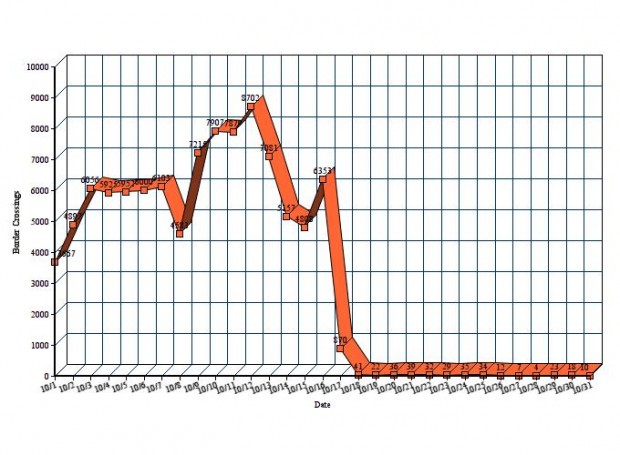Good fences make good neighbors.
Several European countries have erected fences to keep migrants out, and, according to the numbers, every case appears to have a large impact.
Hungary was a popular pathway for refugees on their way to Germany during the fall. When the daily illegal border crossings were at 7,000 per day, Prime Minister Viktor Orban decided to erect a fence along the border to Serbia and Croatia.
The result speaks for itself:

Illegal border crossings in Hungary in October, 2015. (Hungarian Police/The Daily Caller News Foundation)
When the fence went up Oct. 17, the influx went down to 870 from 6,353 only a day earlier. Illegal border crossing were steadily below 40 per day throughout the rest of the month. The number picked up slightly in February, after migrants destroyed part of the fence, but it remains in the low hundreds.
Another successful example is Macedonia — the first step on the Balkan route, which separates Greece from the rest of the EU. Macedonia had more than 60,000 migrants enter the country in January. The migrant influx was cut significantly, leaving tens of thousands stranded in Greece. The desperation among refugees led to clashes with Macedonian military in late February.
Germany’s rising anti-immigration party, Alternative fur Deutschland (AfD), proposed a fence along its border in March.
AfD leader Joerg Meuthen mentioned several examples where fences work, particularly in Spain, where it forces North African migrants to take a long detour to get to Europe.
“They have to go around the Mediterranean” to find a way in, Meuthen said at a rally, according to news agency AFP. “Yes, fences have an impact.”



